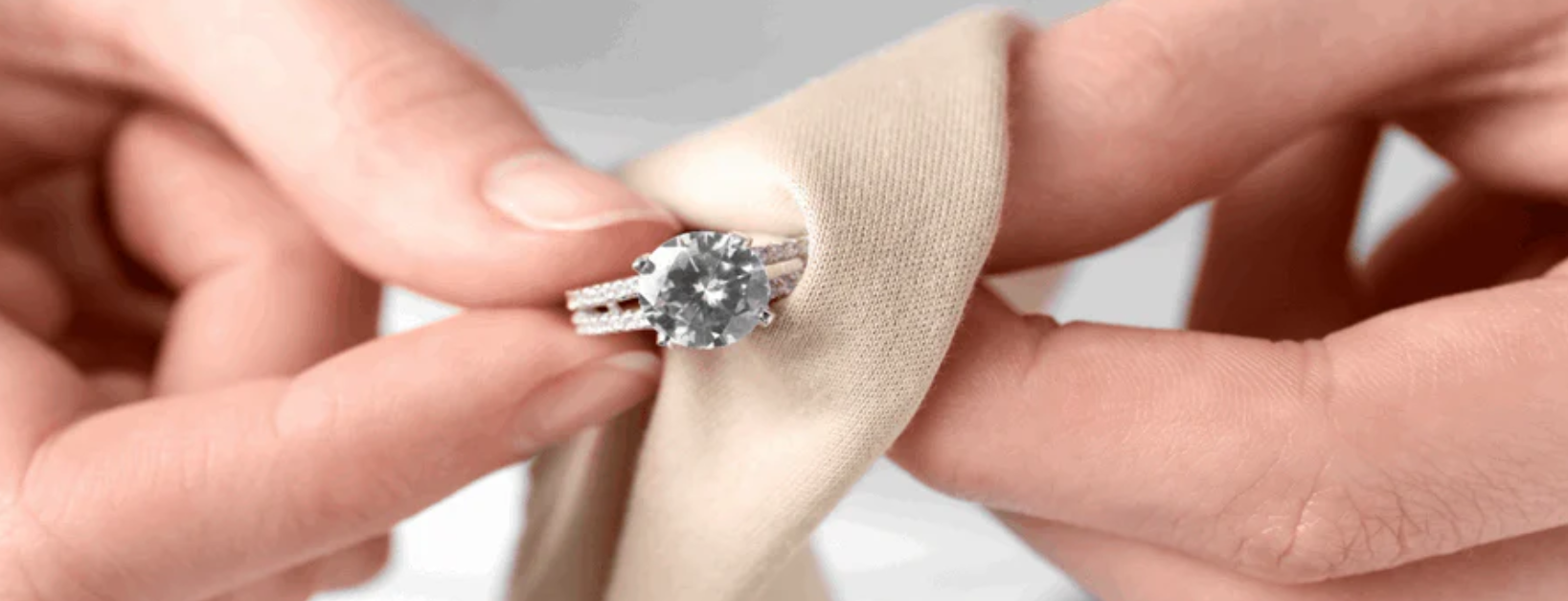The emerald cut engagement ring represents a sophisticated departure from the traditional round brilliant, offering a distinctive blend of understated elegance and architectural beauty. This rectangular step-cut diamond, originally developed for emeralds in the 1500s and adapted for diamonds in the Art Deco era, has captivated couples seeking something beyond the ordinary.
Unlike the fiery sparkle of brilliant cuts, emerald cuts showcase a diamond’s inherent clarity and color through their unique “hall of mirrors” effect. This creates flashes of light that dance across the stone’s surface in broad, dramatic patterns. As vintage and Art Deco styles continue their resurgence in modern jewelry, emerald cut engagement rings have experienced renewed popularity among couples who appreciate timeless design over fleeting trends.
Understanding the nuances of emerald cut diamonds is essential for making an informed purchase, as these stones require different evaluation criteria than their brilliant-cut counterparts.
Understanding the Emerald Cut
The emerald cut belongs to the step-cut family, characterized by parallel facets that resemble a staircase when viewed from the side. This geometric approach differs fundamentally from brilliant cuts, which feature triangular and kite-shaped facets designed to maximize light return and sparkle.
Step cuts prioritize clarity and luster over brilliance, creating broad flashes of light rather than the intense scintillation of brilliant cuts. The emerald cut specifically features a rectangular outline with truncated corners – a practical design element that prevents chipping while maintaining the stone’s elegant proportions.
The signature “hall of mirrors” effect occurs when light enters the diamond and reflects between the step-cut facets, creating mesmerizing patterns of light and dark planes. This optical phenomenon showcases the diamond’s internal characteristics with remarkable transparency, making clarity a paramount consideration.
The Anatomy of an Emerald Cut Diamond
The ideal emerald cut diamond exhibits specific proportional relationships that maximize its beauty and structural integrity. Length-to-width ratios typically range from 1.30:1 to 1.50:1, with 1.40:1 considered the classic proportion. Narrower ratios create a more square appearance, while wider ratios emphasize the rectangular shape.
The facet structure consists of three rows of step facets on both the crown and pavilion, plus the large rectangular table facet on top. This creates a total of 57 facets when including the culet. The corner truncations, or “cut corners,” prevent damage to these vulnerable points while contributing to the stone’s distinctive silhouette.
Table percentages should ideally fall between 61-69%, while total depth should range from 60-68%. These proportions ensure optimal light performance while maintaining the emerald cut’s characteristic appearance. Proper symmetry is crucial, as any misalignment becomes immediately apparent in the step-cut’s clean lines.
Quality Considerations for Emerald Cut Diamonds
Clarity takes precedence in emerald cut diamonds due to their transparent nature. The large table and step-cut facets act like windows into the stone, making inclusions highly visible. Most experts recommend a minimum clarity grade of VS2, though VS1 or VVS grades often provide better peace of mind. Eye-clean stones are essential, as even minor inclusions can detract from the cut’s pristine appearance.
Color is equally important, as emerald cuts tend to retain and concentrate color in their corners and along their length. While brilliant cuts can mask slight color tints through their intense sparkle, emerald cuts display color more honestly. For colorless appearance, consider H color or higher, though some prefer the warmth of I-J grades depending on the setting metal.
Cut quality in emerald cuts focuses on proportions, symmetry, and polish rather than light performance grades used for brilliant cuts. The GIA doesn’t assign cut grades to emerald cuts, making it essential to evaluate proportions manually. Look for excellent symmetry and polish grades, as these directly impact the stone’s visual appeal.
Carat weight appears larger in emerald cuts due to their elongated shape and broad table. A 1-carat emerald cut typically looks larger than a 1-carat round diamond, offering excellent perceived value. However, shallow cuts may appear larger while sacrificing brilliance and structural integrity.
Pros and Cons of Emerald Cut Engagement Rings
Advantages of emerald cut engagement rings are numerous. Their elongated shape creates a flattering effect on fingers, making them appear longer and more slender. The vintage appeal satisfies couples seeking timeless elegance over trendy designs. Emerald cuts also offer excellent value, typically costing 10-30% less than comparable round diamonds while appearing larger due to their shape.
The sophisticated aesthetic appeals to those who appreciate understated luxury. The clean lines and geometric precision complement both classic and contemporary settings, making emerald cuts remarkably versatile.
Considerations include the reduced brilliance compared to brilliant cuts. While the hall of mirrors effect is beautiful, it produces less sparkle than round diamonds. The enhanced visibility of inclusions also limits options for those on tighter budgets, as higher clarity grades become necessary.
The step-cut facets can also make color more apparent, potentially requiring higher color grades. Additionally, the corners, despite being truncated, remain somewhat vulnerable to chipping if subjected to hard impacts.
Setting Styles for Emerald Cut Diamonds
Solitaire settings showcase the emerald cut’s inherent beauty without distraction. Four-prong settings are most common, with prongs positioned at the corners and midpoints of the long sides. Six-prong settings offer additional security but may obscure more of the stone.
Halo designs surround the emerald cut with smaller diamonds, amplifying its presence and adding sparkle. Rectangular halos complement the stone’s geometry, while rounded halos create interesting contrast. Hidden halos underneath the center stone add subtle brilliance without overwhelming the design.
Three-stone arrangements pair the emerald cut center with complementary side stones. Tapered baguettes create a cohesive step-cut aesthetic, while round or pear-shaped sides offer contrast. The side stones should be proportionate to avoid overwhelming the center diamond.
Vintage and Art Deco inspired settings naturally complement emerald cuts, given their shared history. Milgrain detailing, geometric patterns, and intricate metalwork enhance the vintage appeal. These settings often incorporate smaller diamonds or colored gemstones for added visual interest.
Side stone options include straight baguettes for classic elegance, tapered baguettes for a more dynamic look, or round diamonds for increased sparkle. The key is maintaining proportional balance while enhancing rather than competing with the center stone.
Metal Choices and Their Impact
Platinum offers the ultimate in durability and naturally complements colorless diamonds. Its white color won’t influence the diamond’s appearance, and its density provides excellent security for the setting. Platinum develops a patina over time but can be easily polished to restore its original luster.
White gold provides a similar aesthetic to platinum at a lower cost. However, rhodium plating may require periodic maintenance to maintain the bright white finish. 14K white gold offers good durability, while 18K provides richer color but slightly less durability.
Yellow gold creates warmth and vintage appeal, particularly with lower color grade diamonds where the metal’s warmth can complement the stone’s natural tint. The contrast between yellow gold and a colorless diamond creates striking visual impact.
Rose gold has gained popularity for its romantic, vintage-inspired appearance. The warm pink tones complement most skin tones beautifully and create a softer, more feminine aesthetic than white metals.
Shopping Tips and What to Look For
Always insist on certified diamonds from reputable grading laboratories like GIA or AGS. These certificates provide crucial information about the diamond’s quality characteristics and serve as important documentation for insurance purposes.
When possible, view diamonds in person under various lighting conditions. Emerald cuts can appear quite different under fluorescent, LED, and natural lighting. Pay attention to how light moves across the stone and whether any inclusions are visible to the naked eye.
Ask jewelers specific questions about the diamond’s proportions, clarity characteristics, and any treatments. Reputable dealers will provide detailed information and allow adequate time for examination. Don’t hesitate to request additional photos or videos if shopping online.
Consider your budget carefully, keeping in mind that emerald cuts may require higher clarity grades for optimal appearance. However, they typically cost less than round diamonds of comparable quality, allowing for potential upgrades in other areas.
Caring for Your Emerald Cut Ring
Regular cleaning maintains the emerald cut’s transparency and luster. A gentle solution of warm water and mild dish soap, applied with a soft toothbrush, effectively removes daily buildup. Avoid harsh chemicals or ultrasonic cleaners unless specifically recommended by your jeweler.
The truncated corners, while designed to resist chipping, still require protection from hard impacts. Remove your ring during activities that might subject it to blows or abrasion. Store it separately from other jewelry to prevent scratching.
Professional inspection every six months ensures prong security and identifies potential issues before they become serious problems. Many jewelers offer complimentary cleaning and inspection services for rings purchased from them.
Famous Emerald Cut Engagement Rings
Celebrity emerald cut rings have helped fuel the style’s popularity. Amal Clooney’s stunning emerald cut ring from George Clooney showcases the cut’s sophisticated appeal. Beyoncé’s emerald cut ring demonstrates how the shape flatters the hand, while Grace Kelly’s legendary engagement ring from Prince Rainier of Monaco epitomizes timeless elegance.
These iconic examples span different eras yet share the emerald cut’s enduring sophistication. From Hollywood glamour to royal romance, emerald cut engagement rings consistently represent refined taste and understated luxury.
Historical examples include some of the world’s most famous diamonds, proving the cut’s ability to showcase exceptional stones. The emerald cut’s prominence in Art Deco jewelry further cemented its reputation as a choice for discerning individuals.
Making Your Choice: The Emerald Cut Decision
Choosing an emerald cut engagement ring represents more than selecting a diamond shape – it’s embracing a philosophy of sophisticated simplicity. These rings suit individuals who appreciate subtle luxury over obvious display, architectural precision over organic curves, and timeless elegance over trending styles.
The emerald cut’s unique character rewards those willing to prioritize clarity and color quality. While this may require a higher investment in diamond quality, the result is a ring that showcases the stone’s natural beauty with uncompromising transparency.
Consider your lifestyle, personal style, and long-term preferences when making this decision. An emerald cut engagement ring is an investment in enduring beauty that will remain as captivating decades from now as it is today. The sophisticated woman who chooses an emerald cut demonstrates confidence in her own refined taste and an appreciation for the extraordinary found in elegant simplicity.







Add Comment
You must be logged in to post a comment.